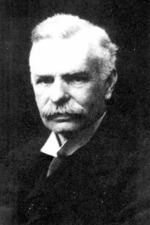Nationality United Kingdom Parents Thomas Oldham | Role Geologist Name Richard Oldham Uncles Charles Oldham | |
 | ||
Born 31 July 1858Dublin ( 1858-07-31 ) Known for measuring Earth's core; separate arrival of seismic phases Died July 15, 1936, Llandrindod Wells, United Kingdom | ||
Richard Dixon Oldham FRS (; 31 July 1858 – 15 July 1936) was a British geologist who made the first clear identification of the separate arrivals of P-waves, S-waves and surface waves on seismograms and the first clear evidence that the Earth has a central core.
Contents
Life
Born on 31 July 1858 to Thomas Oldham, a Fellow of the Royal Society and geologist, Oldham was educated at Rugby School and the Royal School of Mines.
In 1879 Oldham became an assistant-superintendent with the Geological Survey of India, working in the Himalayas. He wrote about 40 publications for the Survey on geological subjects including hot springs, the geology of the Son Valley and the structure of the Himalayas and the Ganges plain. His most famous work was in seismology. His report on the 1897 Assam earthquake went far beyond reports of previous earthquakes. It included a description of the Chedrang fault, with uplift up to 35 feet and reported accelerations of the ground that had exceeded the Earth's gravitational acceleration. His most important contribution to seismology was the first clear identification of the separate arrivals of P-waves, S-waves and surface waves on seismograms. Since these observations agreed with theory for elastic waves, they showed that the Earth could be treated as elastic in studies of seismic waves.
In 1903, Oldham resigned from the GSI due to ill-health and returned to the United Kingdom, living in Kew and various parts of Wales. In 1906 he wrote a paper analyzing seismic arrival times of various recorded earthquakes. He concluded that the earth had a core and estimated its radius to be less than 0.4 times the radius of the Earth.
In 1908 Oldham was awarded the Lyell Medal, in 1911 made a Fellow of the Royal Society, and from 1920 to 1922 served as the President of the Geological Society of London, dying on 15 July 1936.
